Every successful car company has a sell – something that defines it, makes its cars different.
VW’s main sell is that it’s a German brand, like BMW and Mercedes-Benz. That implies higher-end. A notch above, engineering-wise. Smartly put together.
VW is also related to Audi – which is a German luxury car brand.
This means that VW models like the 2018 Golf have much in common with Audi models like the A3.
Both cars are built on modified versions of the same VW/Audi “PQ35” platform, or underlying chassis. Much of the same engineering went into both – and by some of the same engineers, too. So it’s not surprising that the VW not only looks Audi-ish but feels and drives a lot like one, too.
But you can pick up the just-updated 2018 Golf hatchback for about $21k vs. $31,950 for the least expensive version of the Audi A3 sedan.
Also: Audi requires you to buy an almost $40k hybrid – the A3 Sportback eTron – to get a wagon version of this ride.
Meanwhile, you can buy a Golf Sportwagen without the cost-adding hybrid drivetrain but with all that extra room for $21,580.
If you want all-wheel-drive, that’s available, too – in the Golf Alltrack wagon, which stickers for $25,850 to start.
And, there’s a new six-year/72,000 mile whole car warranty – roughly double the coverage offered on last year’s VW. Send a backhanded danke schon to the government for that one. 
VW’s reputation has been so badly beaten by coverage of the diesel emissions “cheating” scandal – in which no one was actually harmed, except the VW executives arrested and caged for affronting Uncle – that super-generous warranty coverage is being offered to put people’s minds at ease about cars that were never anything other than excellent.
Ironically, the new double-down warranty applies to 2018 model year VWs with gas engines, since VW no longer sells any diesel engines in America.
Danke schon to Uncle for that, too.
The Golf is VW’s entry-level model and shares its underlying platform – it’s basic chassis – with the Audi A3.
The VW version is stubbier and taller than the Audi but has almost exactly the same legroom for passengers in both its rows – and significantly more headroom in both rows. It also has more than four times the cargo space.
Both cars come standard with very similar turbocharged four cylinder engines and these each make about the same power – but the VW’s four can still be paired with a manual transmission while the Audi’s comes only with an automatic.
The Audi A3 sedan is available with Quattro AWD while the hatchback Golf and Golf Sportwagen are front-wheel-drive only.
However, you can get all-wheel-drive in the roughly half-that-price Golf Alltrack – and with a manual transmission, too.
Base price for the new Golf hatchback is $20,910 for an S trim with manual transmission. A top-of-the-line SE trim with VW’s six-speed Tiptronic six-speed automatic lists for $24,755.
For reference, the Audi A3 sedan starts at $31,950 for the FWD version; a top of the line Prestige trim with Quattro all-wheel-drive and automatic lists for $43,700.
In addition to a slight cosmetic refresh – the hatchback gets this first – including Audi-esque LED head and tail-lights for all trims – the really big news is VW’s new bumper-to-bumper warranty, which almost doubles to six years or 72,000 miles.
This coverage beats even Hyundai – which offers a ten-year/100,000 mile warranty but that’s only on the powertrain – the car’s engine and transmission. VW’s People First warranty covers the whole car – for about as long as most new car loans last.
Also new is an iPad-style Composition LCD touchscreen; it’s standard on the Golf SE.
Audi DNA . . . VW MSRP.
More head (and cargo) room than its A3 sibling.
VW warranty.
Available manual transmission.
WHAT’S NOT SO GOOD
No more two-door hatchback layout.
No more diesel engine option.
AWD not available in the hatchback or the Sportwagen.
As of now and probably for good – due to the fallout of the diesel “cheating” scandal – the Golf comes with just one engine. A gas-burning engine: VW’s workhorse 1.8 liter turbocharged four (this engine is also used in the Beetle and Jetta).
The formerly available diesel is no longer offered; same deal over at Audi. Uncle is affronted – and VW (and Audi) have had to genuflect before his might.
The VW’s four makes 170 hp at 4,500 RPM and 199 ft.-lbs. of torque at 1,600 RPM vs. 186 hp at nearly the same 4,400 RPM and 221 ft.-lbs. of torque at exactly the same 1,600 RPM for the Audi’s slightly larger 2.0 liter four.
Fraternal twins, remember.
The major mechanical differences come farther down the line.
With the Golf, you can go manual (five-speed) or automatic (six-speed) whereas the A3 is not offered with a manual transmission but offers two automated manuals – and the option to go all-wheel-drive without going to the wagon.
There’s also an uprated (220 hp) version of the 2.0 liter four – bundled with the optional Quattro all-wheel-drive system. This gives the A3 an acceleration advantage over the Golf but only with the optional engine – which it should have given the gulf between the $20k base price of the Golf and the $34k base price of a Quattro-equipped (and 220 hp) A3.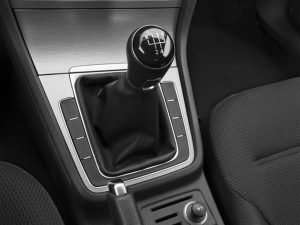
If you compare the FWD versions of each car – 170 and 189 hp, respectively – you’ll discover they both get to 60 within a few tenths of each other (high sixes, low sevens) and return dead heat EPA MPG numbers: 26 city, 35 highway for the FWD A3 with seven-speed automated manual vs. a negligibly different 25 city, 36 highway for the manual-manual VW.
Surprisingly – because it’s unusual – the Golf’s rated mileage drops when ordered with the optional six-speed automatic, to 24 city, 33 highway. But don’t be scared off by this.
In most new cars that offer the choice of manual or automatic behind a given engine, the automatic-equipped version usually delivers slightly better EPA-rated MPG numbers, chiefly because automatics can be programmed to shift at exactly the right moment for best mileage . . .on the EPA’s test loop.
But this doesn’t necessarily mean the automatic will deliver better mileage in the real world than the same car with a manual driven by someone who knows what he is doing.
Only that it will score better on the EPAs test loop.
Uncle’s interferences occasionally have some positive side-effects. These, however, are rarely intentional.
One of these is the elimination – or nearly so – of turbo lag. Which used to be part and parcel of the experience of owing a turbocharged car. Which was usually a high-performance sports car or at least a sporty one.
Turbos went mainstream just recently and are now found in almost every other new car – including economy cars and family cars and everyday hatchbacks like the Golf. The reason for that is Uncle’s relentless badgering of the car companies to squeeze more MPGs out of their cars – which has made it very hard for them to sell engines much larger than about 2.0 liters (notice how common this size engine has become?) in cars ranging from economy subcompacts all the way up to luxury mid-sized sedans – the current BMW 5, for instance – which used to come standard with at least a six in the 3 liter-ish ballpark.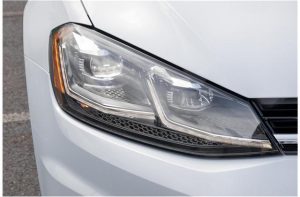
But smaller engines make proportionately less power – unless something is done to breathe on them. Literally.
Like turbocharge them.
The turbo compresses the air coming into the engine, then stuffs it into the engine’s cylinders. Add gas.
Result? More power – power equivalent to a larger engine – but only on demand. Power builds when power is needed, but the rest of the time (when it’s not needed) the engine sips less fuel.
This is the way the car companies end-run Uncle’s fuel economy fatwas.
But there was the issue of turbo lag. Buyers of high-performance sports cars put up with and even liked the sudden rush of turbo-boosted power which came right after a flat spot on the powerband. They also liked working the engine – keeping the RPMs up – to extract that power. But buyers of economy cars and family cars, not so much. They just want the car to go – and to not be slow.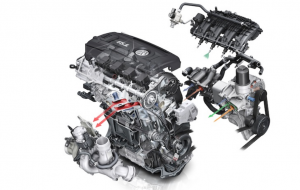
Turbos had to be tweaked.
More linear/constant power delivery was wanted – and has been delivered, via the use of smaller/staged/twin-scroll turbos, as in the VW. These build boost almost immediately, without the preface of the engine needing to exhale a large volume of air (turbos are driven by exhaust pressure) beforehand.
The Cliff’s Notes version of the above is simply this: The VW’s (and Audi’s) comparatively small fours make power comparable to six cylinder engines about 25 percent larger and peak torque almost as soon as you push the Start button, so there’s no flat spot – no lag.
Note that both the VW’s 1.8 liter engine and the Audi’s 2.0 liter engine develop their maximum torque at just 1,600 RPM.
This means both accelerate as if larger-engined, without the lag or the stumble – but with a swell of power that doesn’t crash like a big wave once the RPMs rise. Their peak torque output is maintained almost throughout the rev range, which means these cars run.
Despite Uncle and his fatwas.
The VW’s also arguably more fun – because it offers that do-it-yourself manual transmission. It lets you ride the torque swell like a champion surfer. The Audi is technically quicker – and its available AWD gives it a traction advantage in the curves as well as in the snow – but that’s not the same thing as more fun.
Or go with the automatic, which for the record is a conventional (hydraulic, wit a torque converter) six-speed automatic, unlike the Audi’s six-and-seven-speed automated manuals. Which means it’s less breakdown-likely and will definitely be less expensive to replace if it does break. Automated manuals are very technologically tricky things; you may not want to be the owner of one post-warranty.
The Golf and A3 are shaped differently – the Golf being a stubbier and taller five-door hatchback and the A3 being a sleek and low sedan – but the interior dimensions are nearly identical.
Well, some of them are.
Both cars have exactly the same 41.2 inches of legroom for the driver and front seat passenger and nearly the same backseat legroom (35.6 inches for the VW, 35.4 inches for the Audi).
But the Golf – being a hatchback – has vastly more space for carrying things in addition to people: 22.8 cubic feet behind its second row and 52.7 cubic feet with the second row folded. You can also raise or lower the Golf’s cargo floor almost 4 inches, to adjust for various cargo shapes.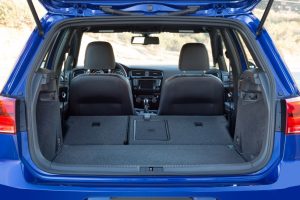
The A3 – being a sedan – has a 10 cubic foot trunk that doesn’t adjust and you can’t lay the second row flat.
The Golf also has a higher roofline than the A3 and so has much more headroom in both its rows: 38.4 inches up front and 38.1 inches in the back vs. 36.5 inches up front and 36.1 inches in the back of the A3.
Its more compact overall dimensions – 167.4 inches long vs. 175.5 for the A3 – make it more tight parking spot friendly, too.
So it’s the more practical of the two.
The A3’s strong suit is its sexier exterior styling, but that doesn’t mean the Golf is frowsy – particularly in terms of its handsome interior design and high-end amenities, which include a glass (not plastic) faced 8 inch Composition Media touchscreen in the SE trims and standard rain-sensing wipers in both trims.
It’s sophisticated without being complicated.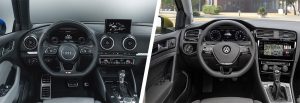
Higher-end cars are having to tout technology and gadgetry in order to differentiate themselves from lower-priced cars, which come with most of the things that used to define a high-end car, such as a great stereo, climate control, oversize sunroof, leather, heated seats und so weiter (and all of which the Golf has).
Thus, the Audi is available with techno things like an all-digital (and configurable) instrument cluster, while the Golf’s is still a traditional analog layout. But even that – a Star Trek-style flat screen gauge cluster -may become a Golf option as it’s already being used in the Golf-based GTI and Golf R.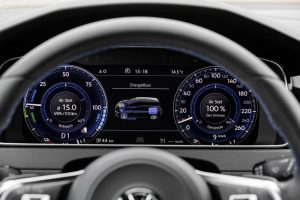
Both cars have dead pedal foot rests to the left of the clutch/brake pedal (a very German and very nice thing to have) but the VW – bless it – still has a manual pull-up emergency brake lever while the Audi has an electric parking brake.
Also, the VW does not have the loathsome automatic engine stop-start system that kills the engine ever time the car rolls to a stop at a red light. Many new cars have this – not because customers are asking for it but because it’s necessary to eke fractional MPG gains out of cars, in order to comply with Uncle’s fuel economy fatwas. These systems might give you an extra 1-2 MPG overall but at the certain cost of shorter battery life (the constant stop-starting is hard on batteries) as well as the cost of the annoyance of the engine stopping and starting perhaps a dozen or more times on your way to work every day.
THE REST

It is nothing less than tragic – for the car buying public – that VW (and Audi) have been forced to pull their clean diesel engines from the American marketplace. Superficially, the whole kerfuffle was about “cheating” on the government’s emissions tests. In fact – though very people know this – the amount of “cheating,” in terms of the difference in tailpipe exhaust emissions – was so trivial that no actual harm was involved, much less proved.
Only that rules were broken.
The government’s tests have become so severe that compliance is becoming impossible – or so expensive that it’s just not worth making the effort. But the public might want to ask whether it makes sense to effectively ban – via regulatory fiat – an engine that is 98.5 percent clean because it is not 98.7 percent clean.
And the tragedy is that these clean diesels are functionally and economically superior to the range-gimped, hours-to-recharge electric cars that are being forced down the market’s throat.
You used to be able to buy a TDI-equipped Golf or Jetta that got 50-plus MPG in real world driving, could go 600 miles on a tank and took five minutes to refuel for about $22k – vs. at least $30-something k for the least expensive electric car that goes maybe 150 miles before it needs at least 45 minutes to recover a partial charge.
VW was working on a 100-plus MPG diesel.
Kaput now.
Danke, Onkel.
THE BOTTOM LINE
Lots of compact hatchbacks out there. The Golf is the only one with a German luxury car pedigree.
. . .
Got a question about cars – or anything else? Click on the “ask Eric” link and send ’em in!
If you like what you’ve found here, please consider supporting EPautos.
We depend on you to keep the wheels turning!
Our donate button is here.
If you prefer not to use PayPal, our mailing address is:
EPautos
721 Hummingbird Lane SE
Copper Hill, VA 24079
PS: EPautos stickers are free to those who send in $20 or more to support the site. Also, the eBook – free! – is available. Click here. Just enter you email in the box on the top of the main page and we’ll email you a copy instantly!


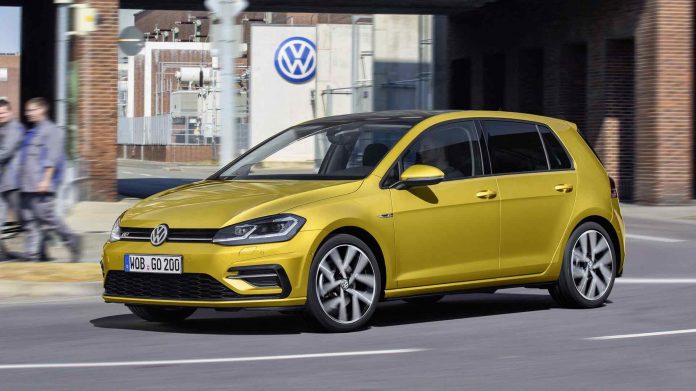


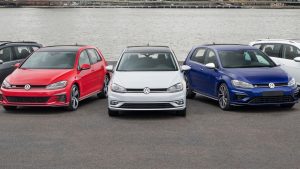

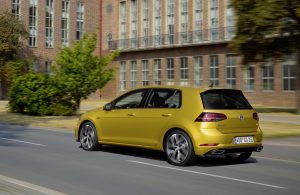
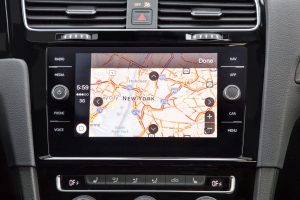
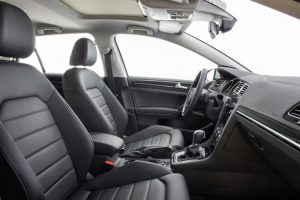

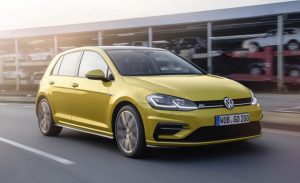
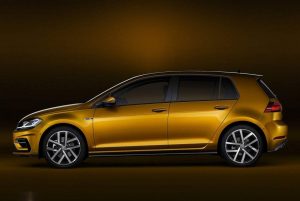








Eric,
Have you seen the episode of the Netflix docuseries “Dirty Money” on VW?
The whole series clearly has an anti capitalist bent, and just the articles I’ve seen on the VW episode look like a propaganda buffet.
Hi Freak,
I haven’t – but will check it out.. hat tip for the tip! And welcome to EPautos, too 🙂
Typo – “In fact – though very people know this”
VW has three problems they need to solve. The first is the diesel thing, obviously. The second is product quality – this has gotten better over the years but there are still places where the vehicles tend to break way more often than the Japanese. Usually because they used plastic in areas subject to engine heat.
But the third is their dealership experience. The buildings are nice enough, but the staff in the ones I’ve visited have obviously been the guys the other dealers fired for poor behavior and low product knowledge.
VW’s a fun ride, & with attractive lease offers.
But I’d never own one – even with the doubling of the bumper-to-bumper warranty I’d still expect it to be in the shop more often than even a domestic vehicle
Eric,
Off topic and I apologize, but have you seen this?
http://www.nationalreview.com/corner/454504/police-murder-daniel-shaver
A murder-by-cop so bad that even the “law and order” types at National Review are horrified.
In the news now, because, as is usual, the cop is found “not guilty”.
What’s happened with the GTI? I’m sure it’s about $25k, but the extra stiff sway bars and the 30 HP advantage, it can scoot pretty well. I almost bought a Jetta GLI in 2014 but I decided I didn’t want to do a payment merry go round again. Lucky I didn’t. I lost my job in 2016 due to the oil crash. I would be figuring out how to keep it away from a tow truck.